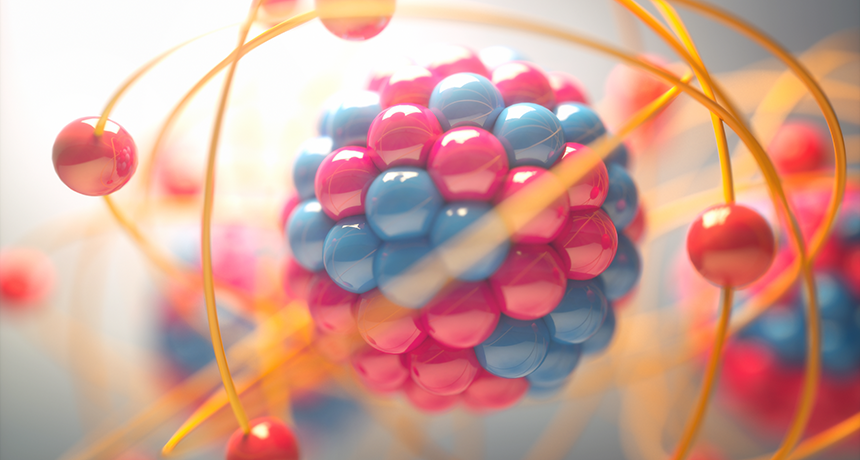atom The basic unit of a chemical element. Atoms are made up of a dense nucleus that contains positively charged protons and uncharged neutrons. The nucleus is orbited by a cloud of negatively charged electrons.
boson One of a group of particles that often carry forces between other particles.
coauthor One of a group (two or more people) who together had prepared a written work, such as a book, report or research paper. Not all coauthors may have contributed equally.
colleague Someone who works with another; a co-worker or team member.
electron A negatively charged particle, usually found orbiting the outer regions of an atom; also, the carrier of electricity within solids.
element A building block of some larger structure. (in chemistry) Each of more than one hundred substances for which the smallest unit of each is a single atom. Examples include hydrogen, oxygen, carbon, lithium and uranium.
equation In mathematics, the statement that two quantities are equal. In geometry, equations are often used to determine the shape of a curve or surface.
gluon A subatomic particle believed to bind other particles together.
grid (in mathematics or mapping) A network of lines that cross each other at regular intervals, forming boxes or rectangles, or an orderly field of dots that mark where each pair of lines intersect, or cross one another.
mass A number that shows how much an object resists speeding up and slowing down — basically a measure of how much matter that object is made from.
particle A minute amount of something.
physical (adj.) A term for things that exist in the real world, as opposed to in memories or the imagination. It can also refer to properties of materials that are due to their size and non-chemical interactions (such as when one block slams with force into another).
physicist A scientist who studies the nature and properties of matter and energy.
proton A subatomic particle that is one of the basic building blocks of the atoms that make up matter. Protons belong to the family of particles known as hadrons.
quantum (pl. quanta) A term that refers to the smallest amount of anything, especially of energy or subatomic mass.
quarks A family of subatomic particles that each carries a fractional electric charge. Quarks are building blocks of particles called hadrons. Quarks come in types, or “flavors,” known as: up, down, strange, charm, top and bottom.
subatomic Anything smaller than an atom, which is the smallest bit of matter that has all the properties of whatever chemical element it is (like hydrogen, iron or calcium).
theoretical An adjective for an analysis or assessment of something that based on pre-existing knowledge of how things behave. It is not based on experimental trials. Theoretical research tends to use math — usually performed by computers — to predict how or what will occur for some specified series of conditions. Experimental testing or observations of natural systems will then be needed to confirm what had been predicted.
theory (in science) A description of some aspect of the natural world based on extensive observations, tests and reason. A theory can also be a way of organizing a broad body of knowledge that applies in a broad range of circumstances to explain what will happen. Unlike the common definition of theory, a theory in science is not just a hunch. Ideas or conclusions that are based on a theory — and not yet on firm data or observations — are referred to as theoretical. Scientists who use mathematics and/or existing data to project what might happen in new situations are known as theorists.








